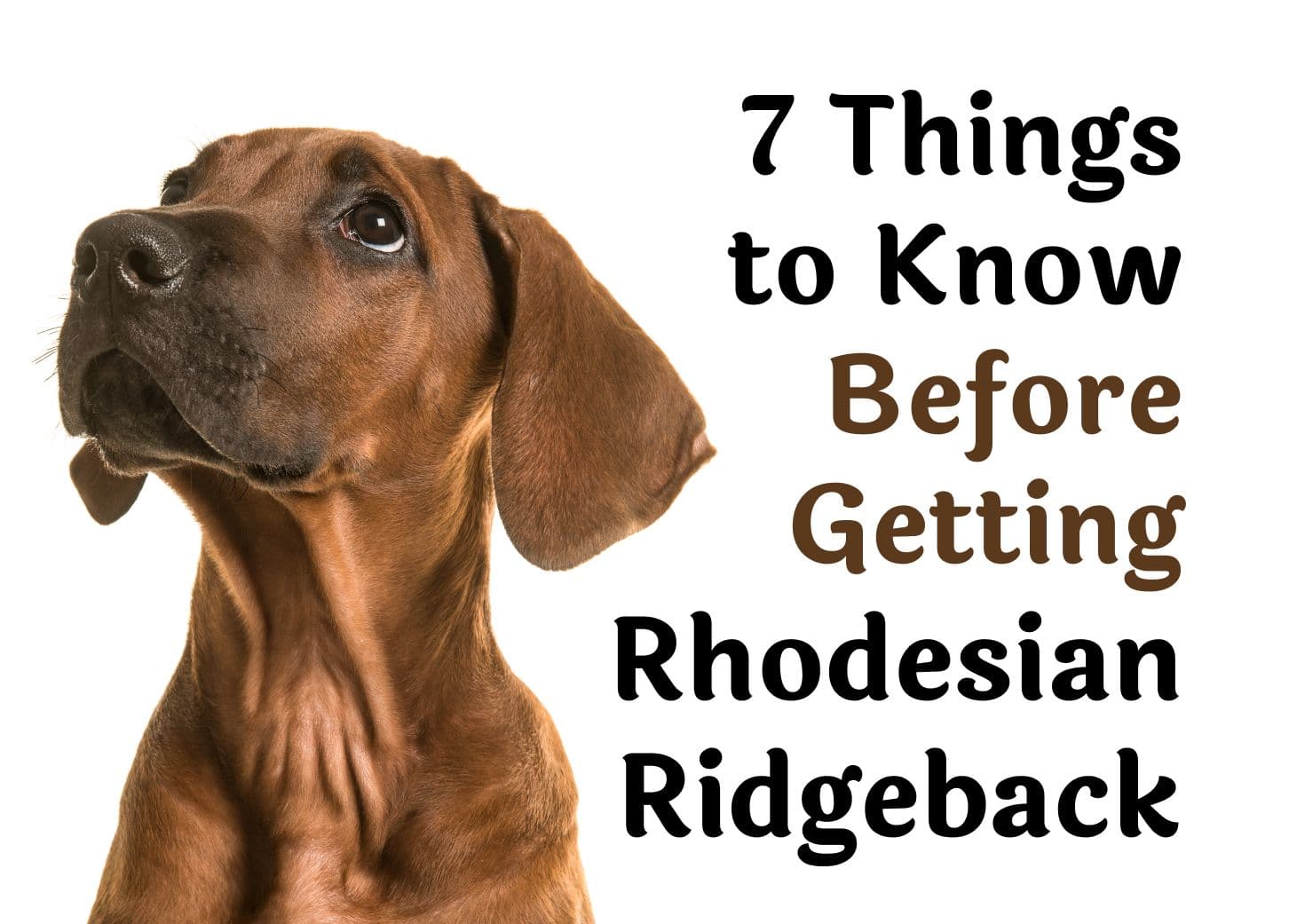What You Should Know Before Getting a Rhodesian Ridgeback

If you’ve ever seen a Rhodesian Ridgeback in person, you know there’s something special about them. Their athletic build, striking wheaten coat, and that signature ridge of hair along their back make them unforgettable. But beyond the looks, Ridgebacks are intelligent, loyal, and full of personality — which is exactly why I fell in love with the breed and ended up creating this whole site!
That said, Ridgebacks aren’t for everyone. They’re not low-maintenance couch potatoes. They need your time, energy, and consistency. But if you’re ready for the commitment, they’ll be one of the most rewarding companions you’ll ever have.
Here’s what I’ve learned from living with these amazing dogs.
What It’s Really Like Living With a Rhodesian Ridgeback
1. They’re big, strong, and athletic.
Males can hit 85 pounds and stand 27 inches tall. Females are slightly smaller. These dogs were bred to hunt lions — literally. They’re built for endurance, speed, and agility. If you’re not an active person, they’ll run circles around you (and probably jump your fence too).
2. They’re whip-smart — and stubborn.
Ridgebacks are thinkers. They’ll figure out how to open doors, get into the trash, or test your limits. Training isn’t hard because they aren’t smart — it’s hard because they’re independent. Positive reinforcement is a must. Harsh discipline will only backfire.
3. Daily exercise isn’t optional.
They need at least 1.5–2 hours of physical activity per day. That could be long walks, runs, hikes, or play sessions in a secure yard. Mental stimulation is just as important — puzzle toys, training games, even nose work helps keep them balanced.
4. They’re incredibly loyal — sometimes to a fault.
Ridgebacks usually bond most closely with one person, though they’ll love the whole family. They’re protective but not aggressive, and they’re excellent with kids when raised and socialized properly.
5. Alone time is not their thing.
These dogs hate being left alone for long stretches. If you work long hours or travel a lot, you’ll need a dog sitter, walker, or a second dog for company. Otherwise, you’re looking at separation anxiety and destructive behavior.
6. Their grooming needs are blissfully simple.
A weekly brushing and the occasional bath will do. They barely shed, but no — they aren’t hypoallergenic.
7. They’re generally healthy — but there are a few things to watch.
Look out for hip and elbow dysplasia, thyroid issues, dermoid sinus, and eye conditions. A good breeder should screen for all of these.
8. Lifespan and cost.
With proper care, Ridgebacks usually live 10–12 years, though some make it to 15+. Expect to pay $1,700–$2,500 from a reputable breeder. Rescues and shelters might charge $400–$500.
Is a Ridgeback Right for You?
Ask yourself this:
- Do you enjoy daily physical activity?
- Can you consistently train with patience and positivity?
- Are you home often or have a plan for when you’re not?
- Do you have a secure yard or access to safe off-leash areas?
If you answered yes, you might be a great match for a Ridgeback.
Getting Ready for Your Ridgeback
Here’s how to prep before bringing one home:
- Puppy-proof your space. Tuck away cords, move houseplants, lock up chemicals, and invest in a lidded trash can.
- Stock up on essentials. Crate, leash, collar, harness, toys (lots!), training treats, grooming supplies, and high-quality food (raw or kibble — just make sure it’s balanced).
- Find your people. Line up a vet familiar with large breeds, and research trainers who use positive methods. If you’re often out, look into dog walkers or daycare options.
- Plan your schedule. Ridgebacks thrive on structure. Start thinking about daily routines before you even bring your pup home.
Raising a Happy, Well-Behaved Ridgeback
- Socialize early and often. Introduce your pup to people, other dogs, different environments — gradually and positively.
- Train with consistency. They’re not hard to train, but they’ll test you. Be patient, firm (not harsh), and reward the good stuff.
- Feed them right. Raw food diets can work well but require research. If that’s not for you, go for a high-quality commercial food. Adults typically eat 1.4–1.7 lbs of food daily.
- Exercise, then exercise some more. A tired Ridgeback is a happy Ridgeback. Without enough activity, they’ll make their own fun (like destroying your couch).
- Keep them on-leash. Their prey drive is no joke. Cats, squirrels, even blowing leaves can trigger a chase. Off-leash time should only happen in secure areas.
- Groom weekly, check ears and eyes. Their short coat is easy to maintain, but regular checkups help avoid infections.
- Clipping nails? Probably not needed. If they’re active outside, their nails stay naturally worn down.
Owning a Rhodesian Ridgeback is a lifestyle — not just a pet choice. They’ll challenge you, make you laugh, and maybe drive you a little nuts on occasion. But if you’re up for it, they’ll be one of the most loyal and rewarding companions you’ll ever have.
Got more questions? We’ve been there — feel free to reach out or leave a comment. Always happy to help a fellow Ridgeback lover.
Take the Quiz
Is a Rhodesian Ridgeback Right for You?
The Rhodesian Ridgeback is known for its strength, loyalty, and distinctive ridge of hair along its back. Discover if this athletic and protective breed is the perfect companion for your lifestyle by taking our quiz! Answer all questions below to discover your compatibility score and get personalized insights.
Question #1: What is the main reason you want a dog?
Question #2: How active is your lifestyle?
Question #3: How much time can you dedicate to your dog daily?
Question #4: What best describes your home environment?
Question #5: What size dog do you prefer?
Question #6: What personality traits do you want in your dog?
Question #7: How much grooming can you handle?
Question #8: Who else lives with the dog?
Question #9: Is this your first dog?
Please answer all 9 questions to see your results
